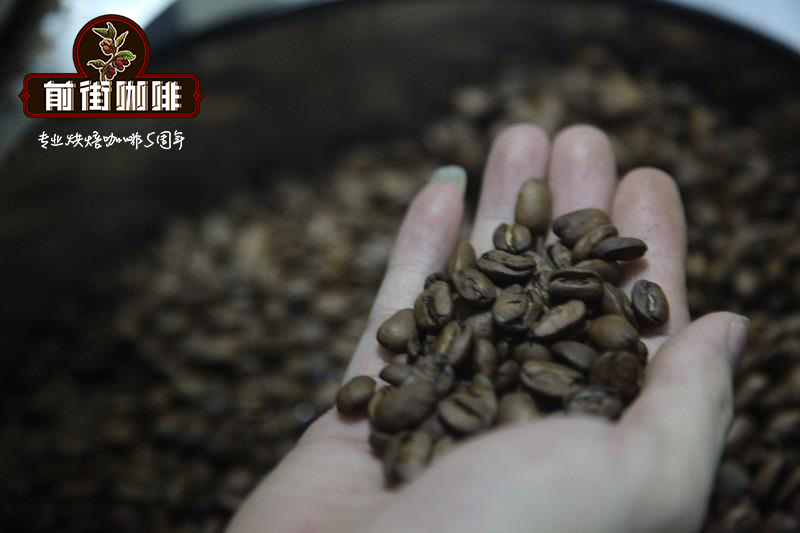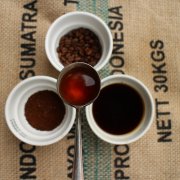The flavor characteristics of Venezuela Venezuelan coffee beans introduce the historical changes of Venezuelan coffee cultivation

Professional coffee knowledge exchange more coffee bean information please follow the coffee workshop (Wechat official account cafe_style)
Venella Coffee (Venezuela)
Venella coffee production is not high, most of it is supplied to domestic consumption. Although geographically, Venezuela is mainly produced in the west near Colombia, but its sour taste is very weak, which is not like Colombian beans, but as sweet and deep as Caribbean beans.
The Rabbi Islands have always been the trading hub between South America and the Old World (Europe). Merchants, missionaries and slaves brought coffee all the way from Europe to Venezuela, including Jos è Gumilla, the author of "El Orinoco Ilustrado" (The Orinoco Ilustrated), which chronicles the story of a group of missionaries who introduced coffee to Venezuela. Shortly after coffee seeds occupied Guayana (currently Bolivar Estate) in the western part of Venezuela, coffee began to enter Colombian territory through these missionaries in 1730.
At that time, Venezuelan economies could be said to follow European demand-and they were European aristocrats, so domestic production was dominated by tobacco, sugar and cocoa. At that time, most of Venezuela's economy and trade was run by a company called Guipozcoana, on the grounds that Spanish authoritarianism (1730-1785) touted a business-oriented society. In order to restrict the import of contraband made in the Netherlands, the rules are becoming more and more strict. in order to strengthen the deterrent effect and attack those who dare to avoid taxes, the government has even arranged fortresses of armed ships and strategic agencies on major cargo channels to restrict improper transactions.
Guipozcoana reached its first major coffee business in 1774, setting an important milestone in legally transporting coffee from Lake Maracaibo (located in the coastal area of northwestern Venezuela; the largest lake and lagoon in South America) to Spain. The Venezuelan writer Mario Brice ñ o Iragory has put forward a very interesting analysis and opinion on the role and influence of coffee and cocoa beans in Venezuelan culture. He describes cocoa beans as symbolic of the original works of European rule in America, while the emergence of coffee beans has become a bargaining chip for a new generation of hybrids to fight for status in society, gradually bringing society out of dictatorship and into a new generation.
In the new generation, coffee has spread all over the country, including Lara, Portuguesa, T á chira, M é rida, Trujillo, Monagas, Sucre, Yaracuy and so on. After a while, however, the nation's attention turned to oil. Between 1929 and 1938, when the United States experienced the Great Recession, the sharp fall in the dollar made coffee exported in dollars too high. While demand for coffee fell, the military government began to explore for oil when it realized the value of oil, and agriculture was quickly forgotten. Farmers and young people have moved out of the countryside, hoping to go to the cities to participate in the oil generation. It is believed that the growth rate of urban population at that time was so exaggerated that no urban planning could cope with it.
In 1777, the spread of coffee in Venezuela increased rapidly, and small coffee plantations began to exist in M è rida and Trujillo and T à chira. Around 1784, the first largest plantation was unveiled in Chacao, a small town near the provincial capital Caracas. At that time, the economic development of Venezuela was unstable. The process of striving for independence after the Declaration of 1810 and the establishment of Big Colombia in 1821 (composed of Colombia, Venezuela, Ecuador and Panama), all kinds of things happened one after another. Until the dawn of peace in the region, coffee began to be favored by farmers and politicians. However, although the country has achieved peace and quiet, it is not immune to international crises. 1836, 1840, 1857, 1882 and 1890 are all years of recording trade disasters, bank failures and conflicts in the interior of Europe. The international price of coffee has naturally declined. Venezuela relies on both Europe and a single export, falling from the third largest coffee exporter in the world to eighth place.
The economies of Colombia and Venezuela are very similar, but by comparison, Colombia's economy is more diversified, and apart from the development of coffee, it has been investing in the cultivation and manufacturing of other crops. Venezuela, on the other hand, is focused on oil, especially under President Marco Perez Jimenez, whose revenues are invested in the government's public facilities, health care, education system and even agricultural modernization. Marco Perez Jimenez is a very famous international political figure, and he was even reported by Time Magazine in 1955.
Later, after the GOMEZ, the country began to experience democratic reforms, whether in foreign relations or oil issues, the attitude is not as good as it used to be. However, the attention of coffee is still low, and many politicians use coffee political tactics and campaign tactics from time to time in order to get the support of farmers.
For a long time, farmers have been full of unspeakable respect for their crops, even when they cut off the old farming to restore the nutrient value of the soil. The more common varieties of coffee beans are Caturra, Catuai and Bourbaun, and Canephora can also be found in warm areas. However, contrary to one's wishes, the emergence of Roya caused farmers across the country to lose their crops. As a result, major organizations, including INIA (Instituto Nacional de Investigaciones Agricolas) and ULA (Universidad de Los Andes), began to study coffee varieties, and the varieties INIA-01 and Araguaney were widely welcomed by farmers.
The relationship between coffee and politics cannot be taken lightly. In 2009, the government self-righteously chose to import beans from Brazil and Nicaragua for cost reasons, instead of supporting local agriculture. The competitiveness of farmers has been weakened again and again.
Coffee is sometimes a panacea for economies in developing countries, and local farmers and politicians are expected to understand this while not forgetting the risks of relying on one-way development. After all, Venezuela has always had this tendency in history, and lessons should have been learned from cocoa to coffee to oil. Venezuela is rarely a country with everything, with both natural resources and cultural conditions. Bearing in mind the problem of relying on a single economy-inflationary pressures, countries need to re-examine the value of farmers and coffee.
Important Notice :
前街咖啡 FrontStreet Coffee has moved to new addredd:
FrontStreet Coffee Address: 315,Donghua East Road,GuangZhou
Tel:020 38364473
- Prev

Is the Venezuelan Tachilla coffee good? Flavor description of Venezuelan Coffee
Professional coffee knowledge exchange more information about coffee beans Please follow the coffee workshop (Wechat official account cafe_style) the distinctive manor coffee comes from this oil-rich country. Oil was once considered the main export product of Venezuela (Venezuela). Although coffee trees were introduced from Martinique as early as 1730 in Venezuela, in the heyday of the oil industry, coffee
- Next

Zambian Coffee Flavor characteristics of Thunderbolt Manor on Lupili Estate Road in Zambia and the District of Kenya
Professional coffee knowledge exchange more coffee bean information please follow Coffee Workshop (Wechat official account cafe_style) Zambia Coffee AA Lupili Manor │ Zambia AA+ Lupili Estate Coffee production area: Zambia / North Island / Kasama area Manor name: Lu Thunderi (so called is actually Lupili) quality rating: AA Plus/18 item
Related
- Does Rose Summer choose Blue, Green or Red? Detailed explanation of Rose Summer Coffee plots and Classification in Panamanian Jade Manor
- What is the difference between the origin, producing area, processing plant, cooperative and manor of coffee beans?
- How fine does the espresso powder fit? how to grind the espresso?
- Sca coffee roasting degree color card coffee roasting degree 8 roasting color values what do you mean?
- The practice of lattes: how to make lattes at home
- Introduction to Indonesian Fine Coffee beans-- Java Coffee producing area of Indonesian Arabica Coffee
- How much will the flavor of light and medium roasted rose summer be expressed? What baking level is rose summer suitable for?
- Introduction to the characteristics of washing, sun-drying or wet-planing coffee commonly used in Mantenin, Indonesia
- Price characteristics of Arabica Coffee Bean Starbucks introduction to Manning Coffee Bean Taste producing area Variety Manor
- What is the authentic Yega flavor? What are the flavor characteristics of the really excellent Yejasuffi coffee beans?

